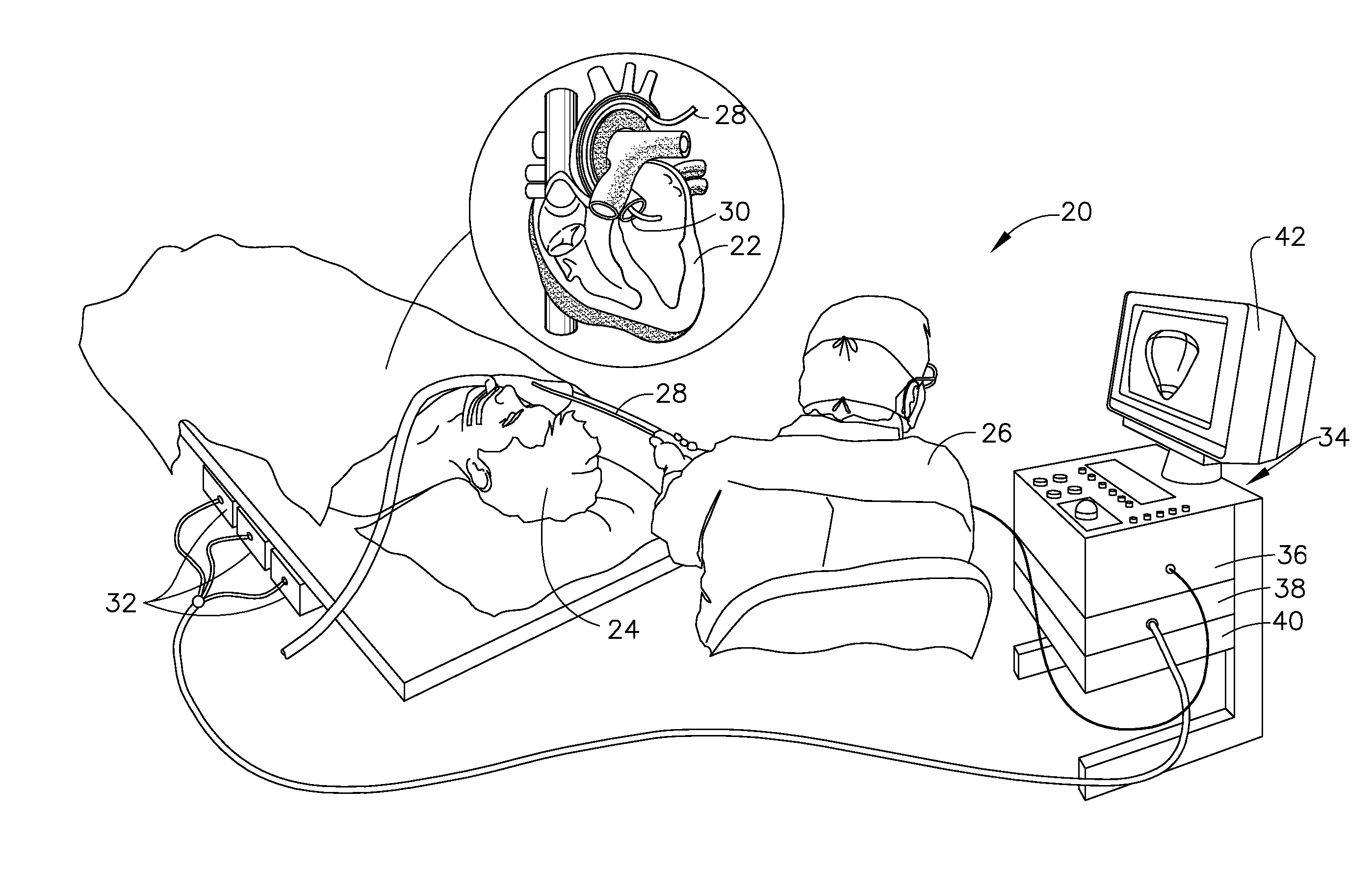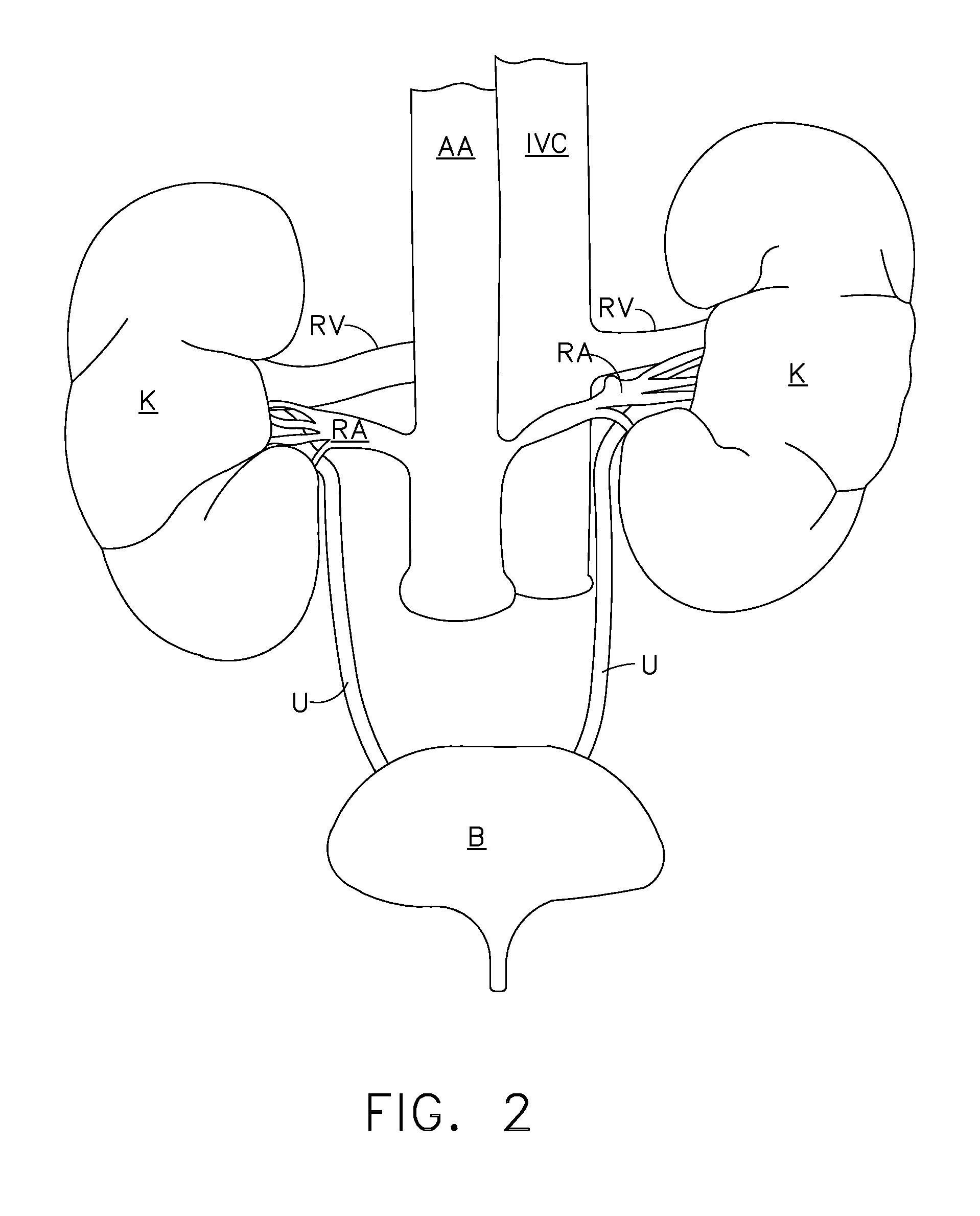Treatment of atrial fibrillation using high-frequency pacing and ablation of renal nerves
a technology of renal nerves and atrial fibrillation, which is applied in the field of treatment of atrial fibrillation using high-frequency pacing and ablation of renal nerves, can solve the problems of sudden death, life-threatening arrhythmia, and cardiac arrhythmia, and achieve the effect of reducing the blood pressure of the patient and reducing the damage to the wall
- Summary
- Abstract
- Description
- Claims
- Application Information
AI Technical Summary
Benefits of technology
Problems solved by technology
Method used
Image
Examples
Embodiment Construction
[0023]FIG. 1 is a schematic, pictorial illustration of a system 20 for renal and / or cardiac catheterization, in accordance with an embodiment of the present invention. System 20 may be based, for example, on the CARTO™ system, produced by Biosense Webster Inc. (Diamond Bar, Calif.). This system comprises an invasive probe in the form of a catheter 28 and a control console 34. In the embodiment described hereinbelow, it is assumed that catheter 28 is used in ablating endocardial tissue, as is known in the art. Alternatively, the catheter may be used mutatis mutandis, for other therapeutic and / or diagnostic purposes in the heart or in other body organs.
[0024]An operator 26, such as a cardiologist, inserts catheter 28 through the vascular system of a patient 24 so that a distal end 30 of the catheter enters a renal artery or a chamber of the patient's heart 22. The operator advances the catheter so that the distal tip of the catheter engages endocardial tissue at a desired location or ...
PUM
 Login to View More
Login to View More Abstract
Description
Claims
Application Information
 Login to View More
Login to View More - R&D
- Intellectual Property
- Life Sciences
- Materials
- Tech Scout
- Unparalleled Data Quality
- Higher Quality Content
- 60% Fewer Hallucinations
Browse by: Latest US Patents, China's latest patents, Technical Efficacy Thesaurus, Application Domain, Technology Topic, Popular Technical Reports.
© 2025 PatSnap. All rights reserved.Legal|Privacy policy|Modern Slavery Act Transparency Statement|Sitemap|About US| Contact US: help@patsnap.com



